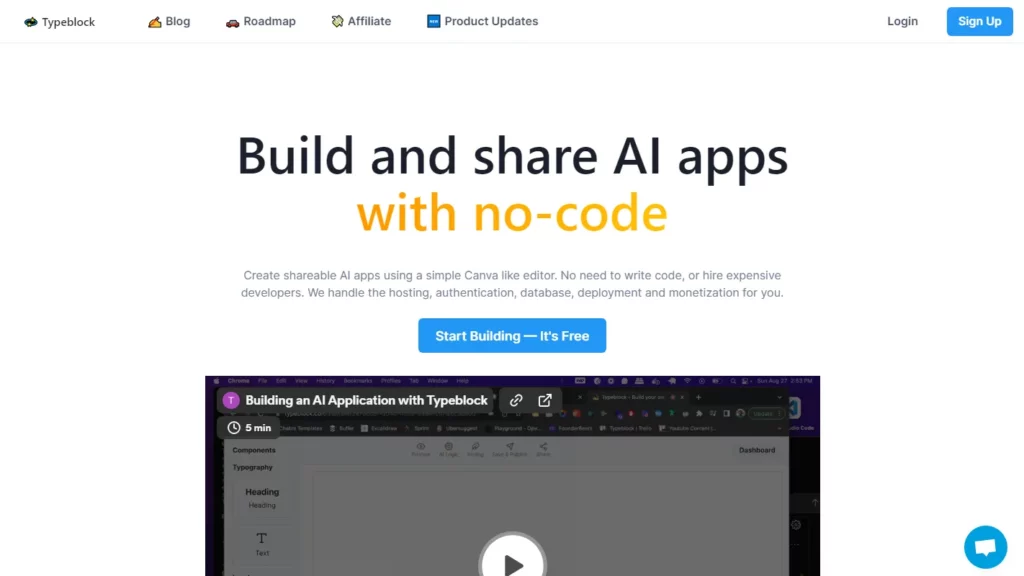Typeblock is a no-code tool that allows users to build, share, and monetize AI applications in a short amount of time. It provides a simple editor, similar to Canva, where users can create shareable AI apps without the need to write code or hire developers. The platform also offers a blog with tutorials and resources for using Typeblock.
⚡Top 5 Typeblock Features:
1. Streaming OpenAI API Chat Completions: Typeblock allows users to stream the API response from the OpenAI chat endpoint using React, Node, and Express. This feature enables users to instantly see chat results without waiting for the completion to end, providing an optimal UX for AI applications.
2. No-Code Solution: Typeblock offers a no-code solution for building AI apps without the need to set up a server, database, or frontend.
3. TextDecoderStream: Typeblock utilizes the TextDecoderStream to read the stream on the client side, allowing users to process and update the value of the state in real-time.
4. User-Friendly Interface: The platform provides a simple and intuitive interface for users to build, share, and monetize AI apps in minutes.
5. Versatile Integration: Typeblock supports integration with various AI models and APIs, enabling users to create a wide range of AI applications.
⚡Top 5 Typeblock Use Cases:
1. Chatbot Development: Typeblock can be used to develop chatbots that stream responses, providing users with instant feedback and improving the overall user experience.
2. AI App Creation: Users can create AI apps without the need for coding knowledge, making it accessible to a wider audience.
3. Real-Time Data Processing: Typeblock’s TextDecoderStream feature allows for real-time data processing and updating, which can be useful in various applications.
4. Monetization of AI Apps: Typeblock provides a platform for users to monetize their AI apps, allowing them to generate revenue from their creations.
5. Integration with OpenAI: Typeblock supports integration with OpenAI’s chat completion endpoint, enabling users to leverage the power of OpenAI’s models for their AI applications.












